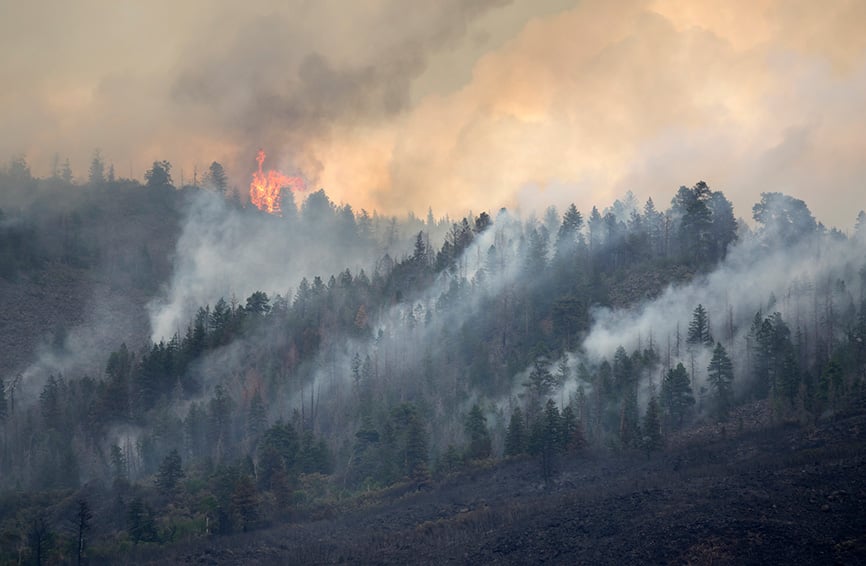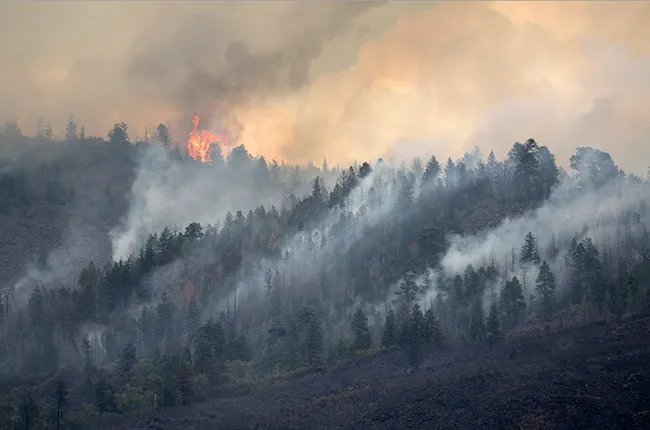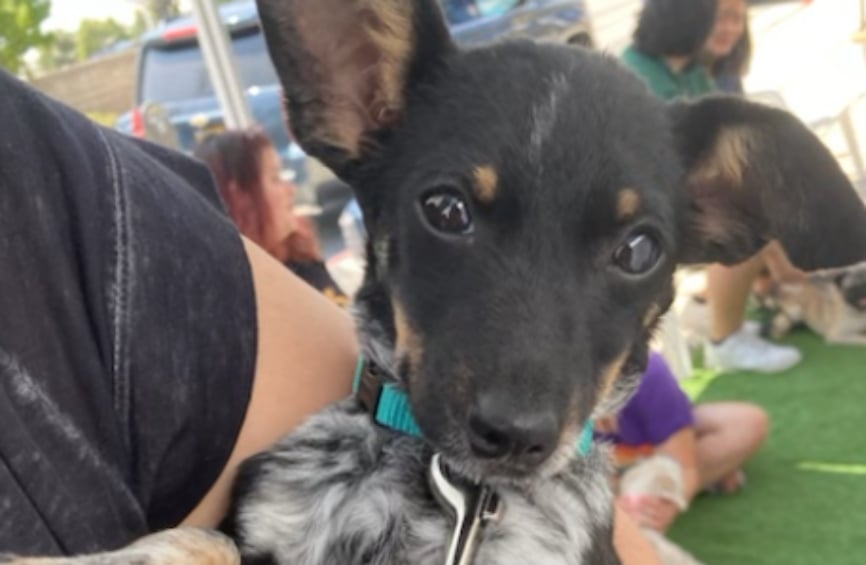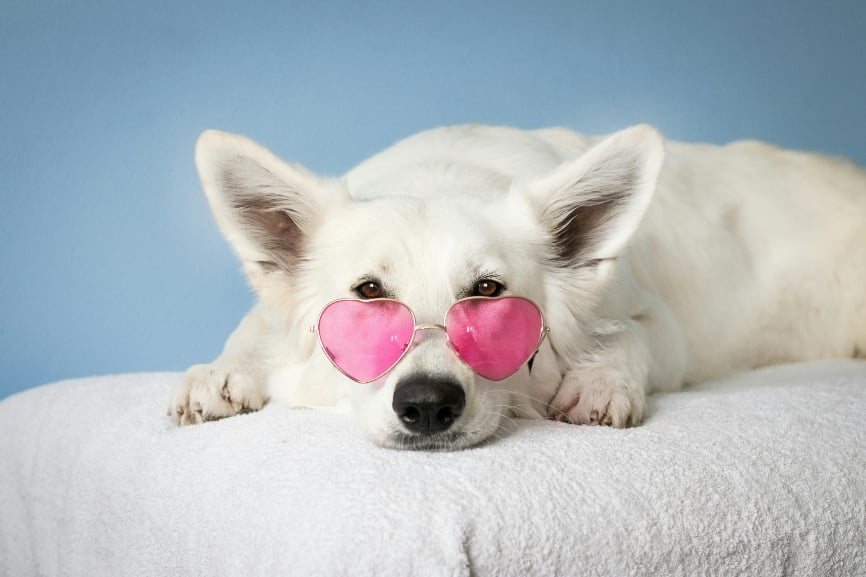Table of Contents
By Sarah-Anne Reed, holistic dog trainer, and owner of Pack Dynamics, LLC ®
West Coast communities have seen increasing numbers of wildfires in recent years, causing record-high unhealthy or hazardous air last. With climate change, fire seasons are lasting longer and pet parents should be vigilant about how smoke might affect their furry best friends when the fires are burning, generally summer into fall.
You may have noticed some changes in your pet’s behavior due to the smoke from recent fires. By taking your dog out on a walk with heavy smoke, or leaving doors and windows open, you are not only being exposed to poor air quality, but it can cause your cat or dog stress. Here’s why your pet may have reacted:
- When a dog or cat smells smoke their natural survival instincts kick in, as smoke means danger.
- Pets would never venture away from the safety of their den or home if they smell smoke unless the fire was close.
Common behaviors that dogs may exhibit due to smoke:
Increased barking
You may have noticed that your dog has been barking more frequently. When their fear, (due to the smoke), has been triggered, dogs are more likely to be on the alert for other dangers. It’s natural for them to bark more when their fear is elevated.
Nervous to go outside to go potty
Some dogs are nervous to go outside to go potty, especially puppies. They may be hesitant to step outside into the yard and may have been waiting for you to go out first. This is a normal reaction, as puppies need extra reassurance that the fire isn’t too close and that it’s safe to go out. You can give them comfort by stepping outside first and staying outside with them.
Anxious on a walk
Your dog may have been putting on the breaks during your walks. Some dogs will freeze and refuse to walk any further away from home. While other dogs may pull the leash, leading you back home. It’s important to honor their fear and need to get back to the safety of the house.
Increased separation anxiety
Has your dog’s separation anxiety increased? Your dog believes that it isn’t safe to go outside, so they naturally want you to stay in the comfort and safety of the house with them. It’s critical not to make a big fuss about leaving and returning, as this will only cause your dog to be more concerned about you leaving.
Once the smoke has cleared it may take a while for your dog’s behavior to change. Think of it like going through a traumatic event; it can take time to process and feel safe and secure again. Dogs, like humans, need time to decompress and realize that they are safe, and their family is out of harm’s way.
Does the Air Quality Warning Affect My Pets?
Unfortunately, yes. Our dogs and cats need to stay inside more during wildfire smoke issues, especially when there are air quality warnings. News station WCRBTV ran an article about fires in Tennessee, quoting veterinarian Dr. Jamie Craven: “Dogs and cats are not too much different from us; they have basically the same anatomy so the same things that affect us are going to affect them.”
The AVMA (American Veterinary Medical Association) advises seeing a vet ASAP if your pet exhibits the following symptoms, especially for pets with already existing medical conditions that could make them very susceptible:
- Coughing or gagging
- Difficulty breathing, including open-mouth breathing and increased noise when breathing
- Eye irritation and excessive watering
- Inflammation of throat or mouth
- Nasal discharge
- Asthma-like symptoms
- Increased breathing rate
- Fatigue or weakness
- Disorientation or stumbling
- Reduced appetite and/or thirst
The AVMA says to limit outdoor time if you are under air quality alerts, restricting to bathroom breaks, and skipping the exercise and play sessions. Easier said than done for those with exuberant puppies, but they may be a little bit lethargic during the smoky days.
What Should I Do in the Event of an Emergency?
For full emergency tips like CPR instructions and first aid, please see Be Prepared: Emergency Pet Safety. If you are in a dire situation right now with a pet, please call your veterinarian.
- Be prepared before a natural disaster by having a plan. Most of us know when we live in disaster zones, so being prepared for these moments helps a lot! Know where to go if you have to evacuate, pack food and water, and a first-aid kit.
- Evacuate with your animal. FEMA advises to take your pets with you: while pups like Odin make national headlines, most of us do not want to risk leaving our pets behind as they can get lost, injured – or worse. Never, ever leave a pet chained outdoors. If the human shelter or evacuation area you are headed to will not allow your pet, contact an animal shelter for resources. The Washington Post reported in September 2018 that more shelters, hotels, and other evacuation centers have started to accept pets.
- Help others if you can, but get yourself (and your family) safe first.
How Can I Help?
The Healthy Paws Foundation has donated some funds to help shelters who are on the front lines of rescuing animals from wildfires, and we recommend them whole-heartedly to our readers and pet parents: The Milo Foundation and Mad Dog Rescue (both were recently featured on ABC). We also recommend any reputable nonprofit in wildfire areas that is actively working to rescue, evacuate, and give shelter to animals in need during this time.
Here are some other resources for fire season:
- Check the air quality where you live
- National Animal Disaster Preparedness Day – Are You Ready?
- Tips to keep your pet safe from Natural Disasters
Infographic

Pets are a big part of our family and they trust us to take care of them, so do as much as possible to help your pets get to safety. And while you certainly can’t prevent natural disasters, you can be prepared for any calamities that include your furry friends. If you’re not already a part of our pack, start by getting a free quote.






